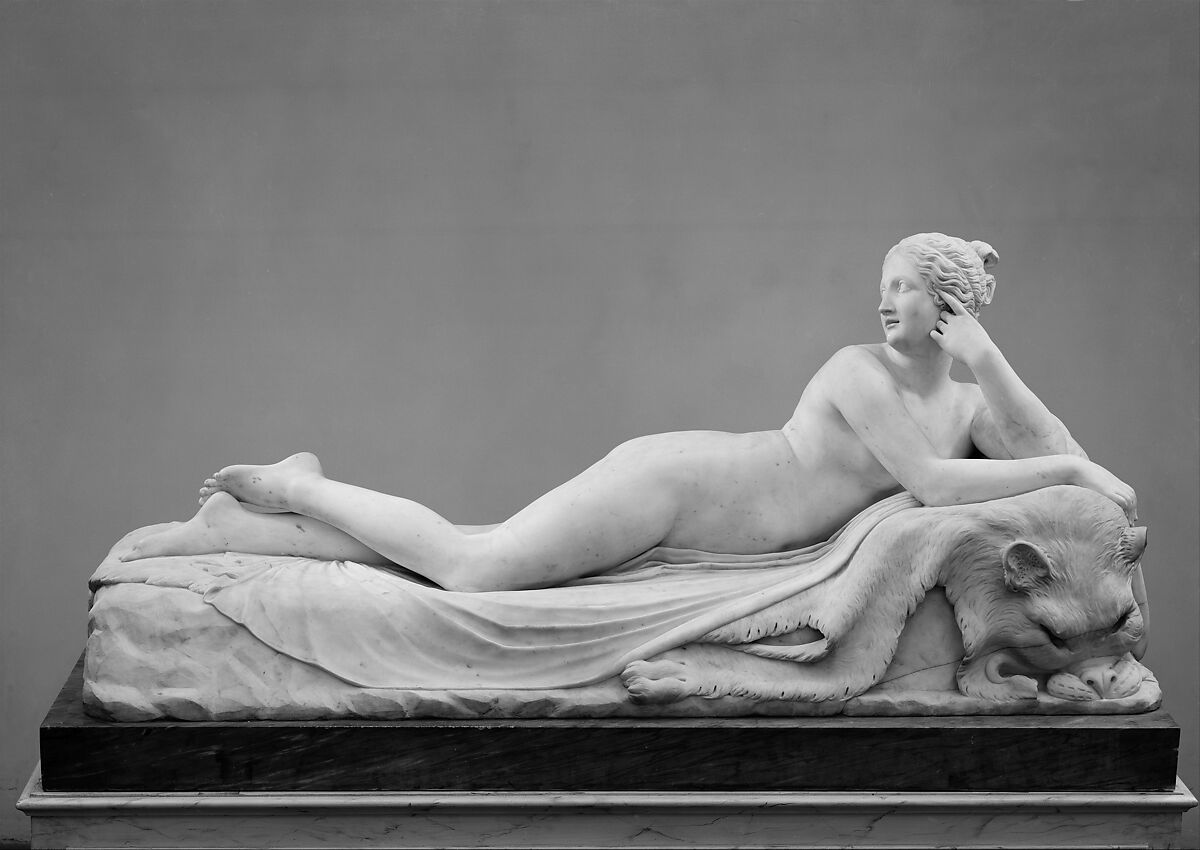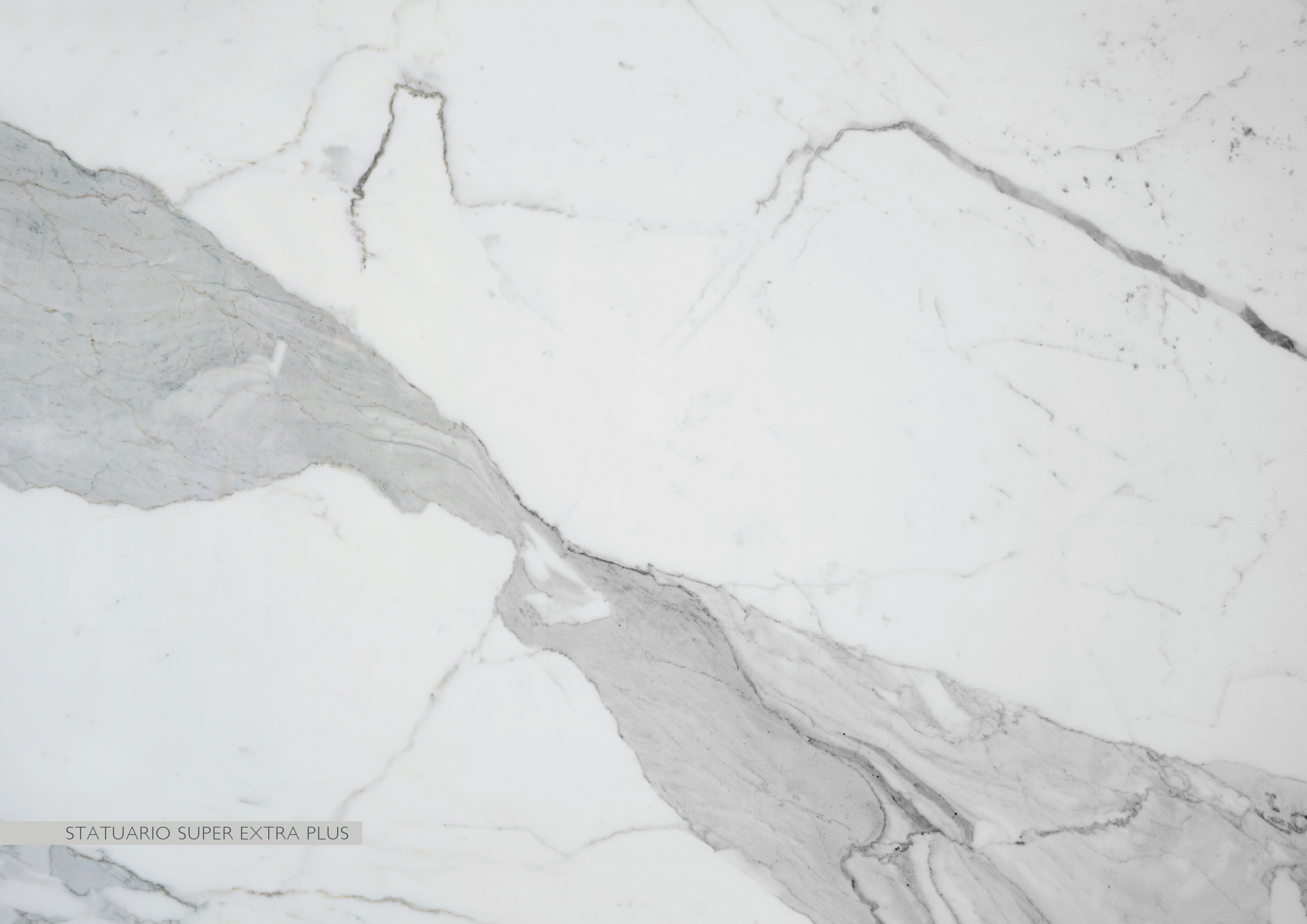Statuario Marble is one of the world's most admired natural stones. With its bright white background and bold, flowing grey veins, it has been the preferred choice of artists and architects for over a thousand years.
🌍 The Global Legacy of Statuario Marble
Today, Statuario continues to grace the world's finest interiors, from Italian villas to modern Indian homes. Its beauty lies not just in its appearance, but in its history—carved through the hands of legends and built into some of the most iconic works of art and architecture.

A masterpiece of neoclassical sculpture showcasing the incredible detail and craftsmanship possible with Statuario marble. This reclining figure demonstrates why artists throughout history have chosen this premium stone for their most important works.
🏛️ The Roman Beginning
The history of Statuario Marble dates back to ancient Rome, when the stone was quarried from the Carrara region of Italy. Known for its strength and purity, it was chosen for monumental structures and imperial buildings.
A remarkable example is Trajan's Column, built in 113 AD. Seventeen massive marble blocks—each weighing up to 30 tons—were transported from the mountains, across the sea, and up the Tiber River to Rome. The column still stands today as a symbol of Roman brilliance and the enduring strength of marble.
⛪ The Middle Ages and Beyond
In the Middle Ages, Statuario Marble became the preferred material for master builders and sculptors working on churches and cathedrals across Italy. From Pisa to Perugia, it was shaped into pulpits, fountains, and religious monuments that blended art with faith.
Craftsmen travelled far to work with the stone, passing on skills through generations and establishing a marble tradition that still lives on.
🎨 The Renaissance – Marble and Immortality
The Renaissance marked the true rise of Statuario's global fame. Artists of extraordinary vision chose this marble for their most revered works. Michelangelo carved the Pietà from a single block of Statuario, capturing divine emotion in stone.
Sculptures like The Rape of the Sabine Women by Giambologna and public monuments across Italy used Statuario to tell stories, symbolize power, and preserve beauty for eternity. It was in this era that marble became more than a material—it became a message of permanence and grace.
🏛️ The Neoclassical Rebirth
During the 18th century, political stability and better transportation made it easier for marble to reach new parts of Europe. Once again, it was at the center of artistic revival. Sculptor Antonio Canova used Statuario to create delicate masterpieces like Eros and Psyche, celebrating form, emotion, and elegance.
🇺🇸 A Place in Modern History
Statuario Marble also made its mark in the New World. In the early years of the United States, it was used in the creation of national monuments and grand public buildings. Statues in Washington, D.C., including tributes to Benjamin Franklin and others, were sculpted from Italian marble—representing dignity, strength, and timeless leadership.
To this day, Statuario is found in prestigious homes, museums, and government buildings around the globe.
🏡 From Heritage to Modern Indian Homes
What began as a stone for emperors and artists is now a symbol of refined living. In India, Statuario Marble is fast becoming the material of choice for those building dream homes, luxury apartments, boutique hotels, and statement interiors.
Its bright surface makes rooms feel larger and lighter. Its distinctive veins add drama and elegance. And its story brings a sense of timeless richness to modern design.
💎 A Stone That Lasts Forever
Statuario Marble represents more than style—it stands for enduring beauty, cultural heritage, and artistic legacy. It is a natural material with a royal past, a present rooted in design, and a future that continues to inspire.
Available exclusively at White Mansion, where authentic Italian white marble is carefully curated and delivered across India for your most premium spaces.

